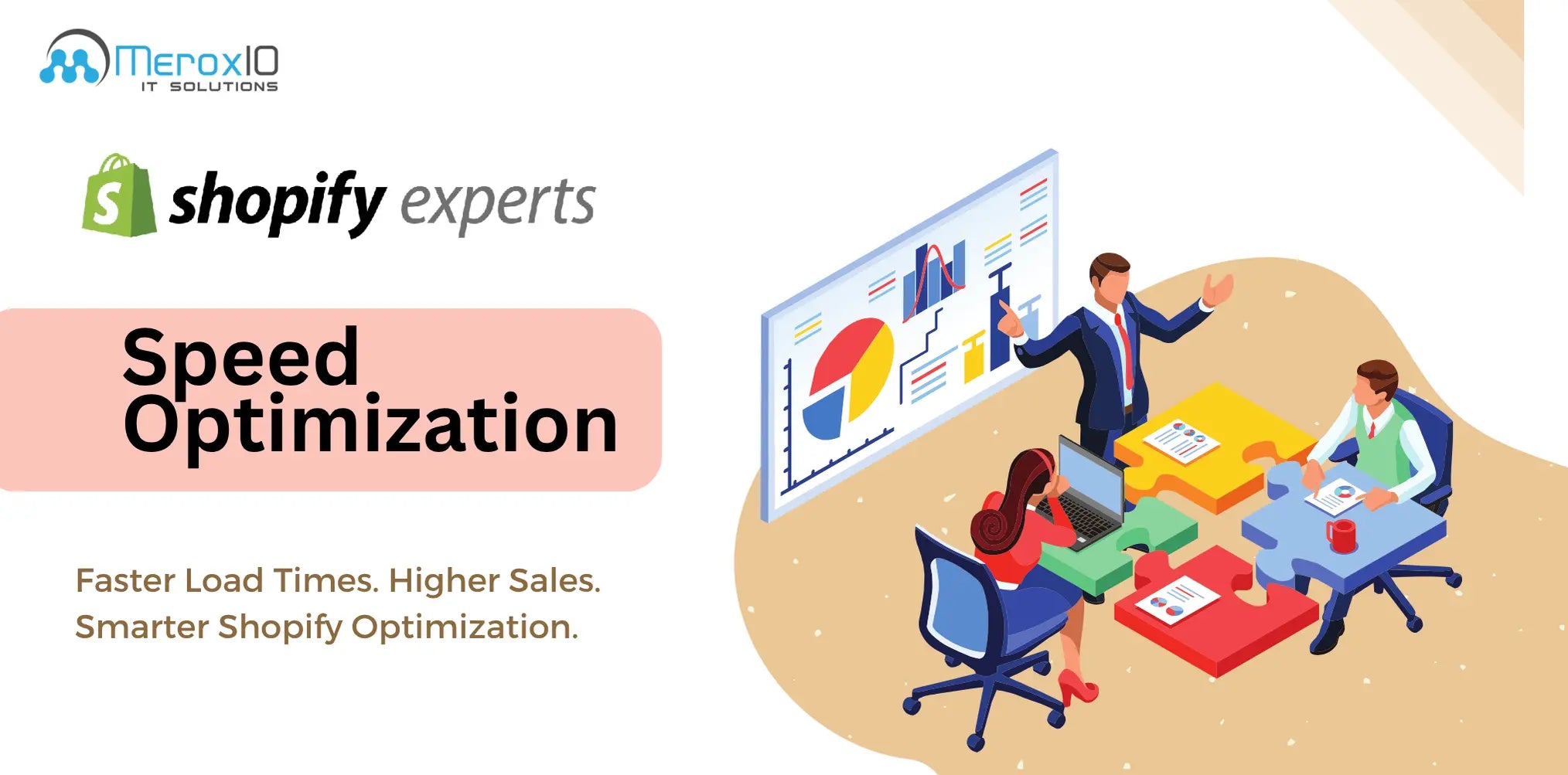How Shopify Speed Optimization Services Can Increase Conversions

In the fast-paced world of e-commerce, every second counts—literally. A slow-loading website isn’t just frustrating for your visitors; it can significantly hurt your sales. On Shopify, where user experience directly affects customer decisions, optimizing your store's speed can be one of the most powerful ways to increase conversions.
Why Website Speed Matters
Website speed is no longer just a technical metric—it’s a core part of your online store’s success. Studies consistently show that even a one-second delay in page load time can reduce conversion rates by up to 7%. For Shopify stores, which often rely on rich visuals, multiple apps, and custom themes, speed optimization becomes essential.
Understanding Shopify Site Speed Optimization
Shopify site speed optimization involves a series of technical improvements that reduce page load time and enhance performance. This includes minimizing HTTP requests, reducing image sizes, eliminating unused code, and leveraging browser caching.
More specifically, Shopify page speed optimization also targets platform-specific issues such as:
-
Liquid template bloat
-
App overuse and unoptimized third-party scripts
-
Poor mobile performance
-
Non-compressed assets
By addressing these issues, store owners can reduce friction in the buyer journey, leading to faster checkouts and lower bounce rates.
How Speed Affects Conversion Rates
Here’s how performance improvements directly lead to better results:
-
Lower Bounce Rates: When pages load quickly, users are more likely to stay and browse.
-
Improved Mobile Experience: Mobile shoppers expect fast-loading sites. Poor performance leads to high abandonment.
-
Better SEO: Google uses page speed as a ranking factor. Faster sites typically rank higher, attracting more organic traffic.
-
Streamlined Checkout Process: Fewer delays during checkout reduce cart abandonment rates.
In short, Shopify performance optimization aligns technical improvements with real business outcomes.
The Role of Shopify Speed Optimization Services
While some improvements can be made in-house, most merchants benefit from expert-level intervention. Shopify optimization services help identify specific performance issues using diagnostic tools, apply advanced techniques like lazy loading, and restructure themes for efficiency.
What to Optimize First
If you're looking to increase conversions through speed, consider these action points:
-
Compress all media assets (images, videos, icons)
-
Remove unused apps and code.
-
Minify JavaScript and CSS files
-
Implement lazy loading for below-the-fold content
-
Use Shopify’s native speed tools to monitor performance
Each of these adjustments contributes to faster load times and better user engagement.
Final Thoughts
Optimizing your Shopify store for speed isn't just about better technical performance—it's about creating a seamless experience that turns visitors into customers. With the right combination of strategy and execution, speed optimization becomes a catalyst for higher conversions.
Brands like MeroxIO IT Solutions recognize the critical role of performance in eCommerce success and offer insights and services tailored to this growing need.
FAQs on Shopify Speed Optimization
1. What is Shopify speed optimization?
A: Shopify speed optimization is the process of improving your store’s load time and performance by optimizing assets, reducing code bloat, managing apps, and enhancing theme efficiency. It directly impacts user experience, SEO, and conversions.
2. How does page speed affect Shopify conversions?
A: Faster page speeds reduce bounce rates, improve mobile usability, and create a smoother shopping experience—all of which contribute to higher conversion rates.
3. What tools can I use to check the speed of my Shopify store?
A: You can use tools like Google PageSpeed Insights, GTmetrix, Shopify’s built-in speed score, and Lighthouse audits to analyze your site’s performance.
4. Can I optimize my Shopify site speed without hiring a developer?
A: Yes, some steps like compressing images, removing unused apps, and limiting large video files can be done without coding knowledge. However, deeper Shopify performance optimization usually requires expert help.
5. How do Shopify optimization services help?
A: Professional Shopify optimization services provide a thorough audit, apply performance best practices, restructure code, and implement advanced techniques such as script deferral, lazy loading, and caching strategies tailored to Shopify's architecture.
6. How often should I review my store's speed?
A: Ideally, review your site’s speed every quarter or after major design or app updates. Regular monitoring ensures that new elements don’t degrade performance over time.










